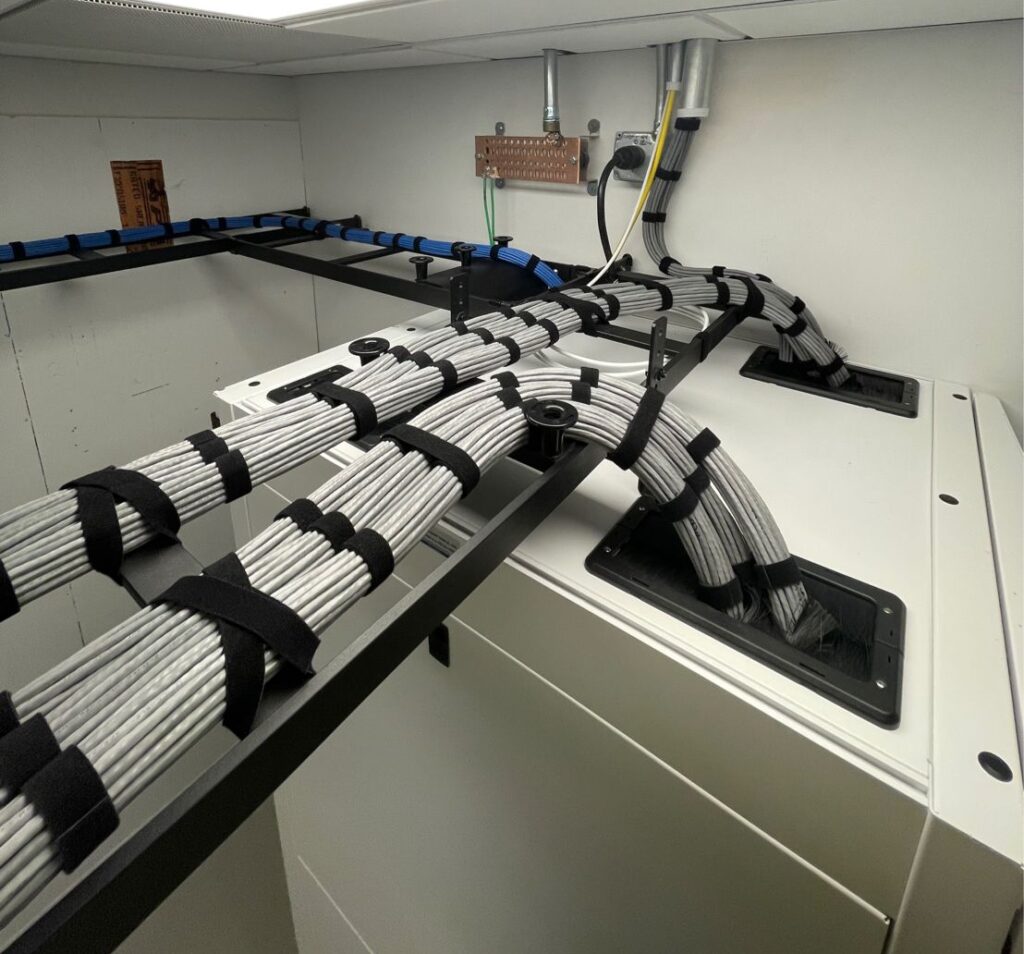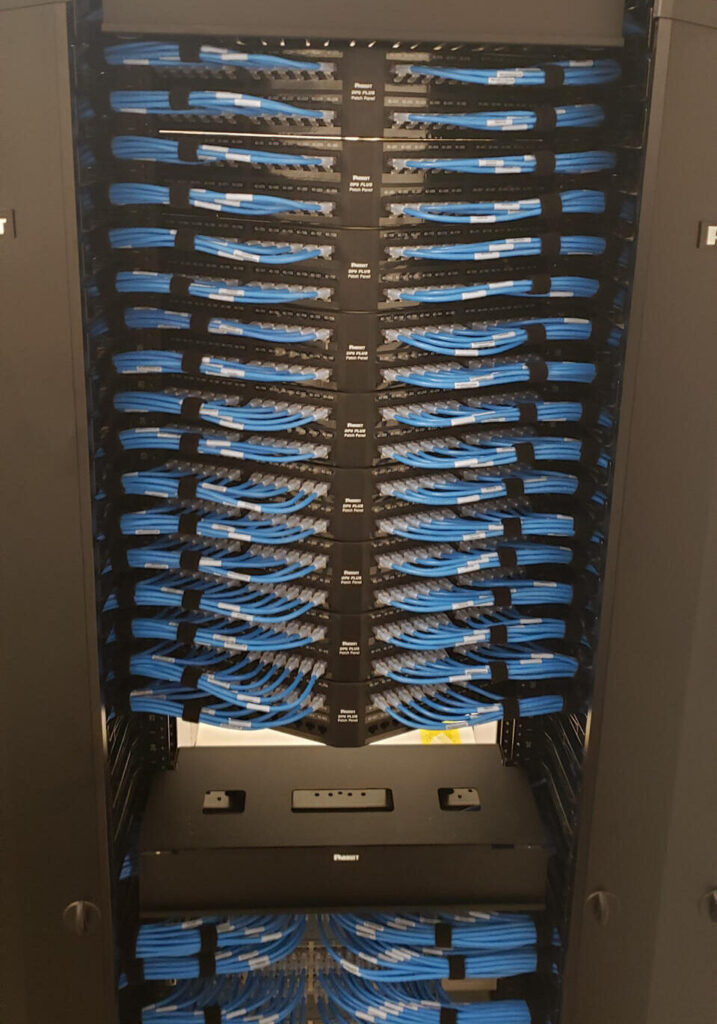Structured Cabling

Structured cabling is the lifeblood of all technologies
West Coast Cable provides enterprise-grade cabling to ensure your network not only meets the standards of today but can withstand the test of time. From planning to designing, installation, termination, testing, and documentation the West Coast Cable team provides exceptional service. West Coast Cable installs, manages, and troubleshoots category 5/5e/6/6A and fiber optic cables for:
- Computer lines
- Phone lines
- Wireless
- Networking
- Security cameras
- Access control
- Alarm systems
- Audiovisual
- Paging/intercom
Scalability: Structured cabling provides a flexible framework that allows for easy expansion or modification of network infrastructure. This scalability ensures that businesses can adapt to changing needs and technology advancements without having to overhaul their entire cabling system.
Reliability: A well-designed structured cabling system minimizes downtime by providing a reliable network connection. It reduces the risk of network failures and disruptions, which is crucial for businesses that rely heavily on uninterrupted connectivity for their operations.
Ease of Troubleshooting: Structured cabling systematically organizes the network infrastructure, making it easier to identify and troubleshoot connectivity issues. This results in quicker resolution of problems and less downtime for the network.
Cost-effectiveness: While the initial investment in structured cabling may seem high, it offers long-term cost savings. It reduces the need for frequent maintenance and upgrades, as well as minimizes the potential for costly network downtime.
Support for Various Technologies: Structured cabling supports a wide range of network technologies and applications, including voice, data, video, and multimedia. This versatility ensures that businesses can easily adopt new technologies without having to replace their cabling infrastructure.
Future-Proofing: By investing in structured cabling, businesses can future-proof their network infrastructure to some extent. It provides a solid foundation that can support future technology advancements and higher bandwidth requirements.

